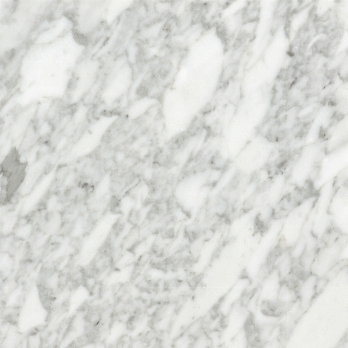Gioia Brouillč
quarry of origin
Gioia
Carrara, Italy
Petrografic name (according EN 12407): Marble
Macroscopic description: A fine-grained, compact lithotype with a breccia appearance composed of white clasts with a sub parallel orientation that range in size from subcentimetric to pluricentimetric (in which case fine light grey or brown veins can be observed). These are immersed in a lightish grey groundmass and the edges may be more or less distinct. There is also a close-knit pattern of fine white veins in the groundmass and scarce surface porosity.
Technical data provides a frame of reference only. As stone is a product of nature, up to date testing to determine specific physical qualities should be repeated for each major project. We decline any responsability for the mis-use of this data, since said data is sourced from the quarry.
Physical mechanical characteristics
| STANDARD | U.M. | MEAN VALUE | ST. DEV. | |
 EN 13755-08 EN 13755-08 |
Water absorption at atmospheric pressure | % | 0,1 | 0,01 |
 EN 1936-07 EN 1936-07 |
Apparent Density | KG/m3 | 2720 | 4,1 |
 EN 1936-07 EN 1936-07 |
Open porosity | % | 0,3 | 0,01 |
 EN 12372-07 EN 12372-07 |
Flexural strength | |||
| (in natural conditions) | MPa | 17,6 | 2,1 | |
| (EN 12371-03 exposed to 48 frost cycles | MPa | 13,6 | 2,5 | |
 EN 1926-07 EN 1926-07 |
Uniaxial compressive strength | MPa | 115,1 | 10,2 |
 EN 14231-04 EN 14231-04 |
Slip resistance (honed finishing) | |||
| (dry) | USRV | 55 | 5,3 | |
| (wet) | USRV | 23 | 1,2 | |
Block and slab characteristics
Average size of blocks: 3,00 x 1,70 x 1,70m
Slabs are preferably cut against the grain, i.e. the hard wa
 Cutting of blocks
Cutting of blocks  Surface lavoration
Surface lavoration
 Cutting of blocks
Cutting of blocks  Surface lavoration
Surface lavoration
Microscopic description according to EN 12407 e EN 12460
| A calcitic crystalloblastic metamorphic lithotype composed of a mosaic of inequigranular euhedral/subeuhedral crystals with mainly straight grain boundaries (from 50 to 750 µm) that identify areas characterised by different sized crystalline mosaics. There are calcitic veins in blasts (200 ÷ 300 µm) that are both clear and clouded by opaque minerals, in calcitic microblasts of approximately 20 µm with abundant inclusions of opaque minerals, rare rhombic blasts of clouded dolomite, pyrite (from 30 to 50 µm), rare quartz idioblasts (< 200 µm) and rare acicular muscovite. In the areas around the veins or bordered by them, there is a reduction in size of the calcite (< 100 µm). |




